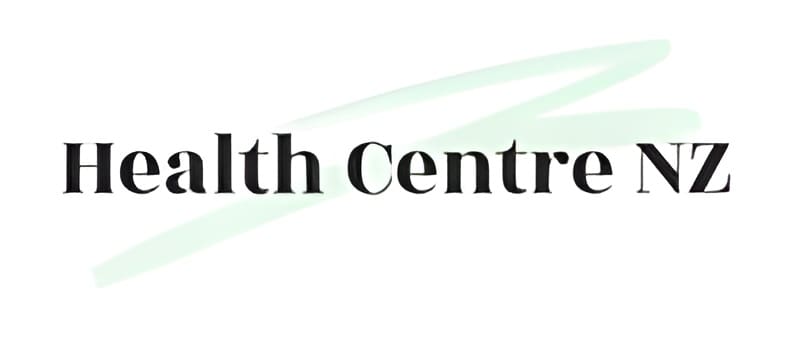
Empowering Women: Challenging Gender Stereotypes in Media
An exploration of the efforts to empower women and challenge gender stereotypes in the media industry, highlighting the importance of diverse representation and the impact it can have on society.
Increasing Female Representation
Efforts to increase the presence of women in the media industry have gained significant momentum in recent years. Various initiatives and strategies have been implemented to address the underrepresentation of women and promote gender equality in media.
One key aspect of increasing female representation is the promotion of female voices in decision-making roles. This involves advocating for more women to be in positions of power and influence within media organizations. By having women in leadership positions, their perspectives and experiences can shape the content and direction of media, leading to more diverse and inclusive storytelling.
In addition to promoting women in decision-making roles, creating inclusive spaces for women to share their stories is crucial. This can be done through the establishment of platforms and networks specifically designed to amplify women’s voices. By providing a supportive and inclusive environment, women are empowered to share their experiences, perspectives, and expertise, contributing to a more balanced representation in media.
Furthermore, initiatives that focus on mentorship and skill-building for women in media play a vital role in increasing female representation. By providing mentorship opportunities, women can gain valuable guidance and support from experienced professionals in the industry. This helps to bridge the gender gap by equipping women with the necessary skills and knowledge to succeed in their careers.
Overall, increasing female representation in media requires a multi-faceted approach that includes promoting women in decision-making roles, creating inclusive spaces, and providing mentorship opportunities. By implementing these strategies, the media industry can become more diverse, representative, and reflective of the experiences and perspectives of women.
Breaking Stereotypes and Redefining Roles
Breaking Stereotypes and Redefining Roles
The media plays a crucial role in challenging traditional gender stereotypes and redefining societal expectations of women. It has the power to shape narratives and influence public perception, making it a powerful tool for promoting gender equality. One way in which the media can break stereotypes is by portraying women in non-traditional roles.
Traditionally, women have been limited to certain roles and professions, often confined to domestic and caregiving roles. However, the media has the ability to challenge these stereotypes by showcasing women in a wide range of professions and positions of power. By highlighting women in leadership roles, science, technology, engineering, and mathematics (STEM) fields, and other traditionally male-dominated industries, the media can inspire young girls and women to pursue their dreams and break free from societal expectations.
Furthermore, the media can also contribute to the celebration of diverse experiences and identities of women. By representing women from different backgrounds, ethnicities, abilities, and sexual orientations, the media can promote inclusivity and challenge the notion of a single, narrow definition of womanhood. This can help to create a more accepting and tolerant society, where all women feel seen, heard, and valued.
Shifting Narratives and Perspectives
Shifting Narratives and Perspectives
Storytelling has a powerful impact on how we perceive and understand the world around us. In the context of women’s representation in media, storytelling plays a crucial role in shifting narratives and perspectives about women. It has the ability to challenge stereotypes and promote gender equality by offering authentic and nuanced portrayals of women.
Authentic portrayals of women in media are essential in breaking down gender stereotypes. By presenting women in diverse roles and experiences, media can challenge the traditional expectations placed on women and redefine societal norms. This can range from showcasing women in non-traditional careers and leadership positions to celebrating the complexities of their identities and experiences.
Through storytelling, media has the power to create empathy and understanding, allowing audiences to connect with women’s stories on a deeper level. By presenting women as multi-dimensional characters with their own ambitions, struggles, and triumphs, media can challenge preconceived notions and foster a more inclusive and equitable society.
Furthermore, by highlighting the importance of gender equality through storytelling, media can inspire individuals to take action and advocate for change. By showcasing the strength, resilience, and capabilities of women, media can empower individuals to challenge the status quo and demand more inclusive and representative content.
In order to achieve a shift in narratives and perspectives, it is crucial for media to prioritize authentic and nuanced portrayals of women. This involves providing opportunities for women to share their own stories and ensuring that their voices are heard and valued. It also requires media creators and gatekeepers to actively challenge and question the stereotypes and biases that have been perpetuated in the industry.
Ultimately, shifting narratives and perspectives about women in media is a collective effort that requires the collaboration of media professionals, audiences, and society as a whole. By recognizing the power of storytelling and the impact it can have on shaping our perceptions, we can work towards a more inclusive and equal media landscape that truly reflects the realities and experiences of women.
Media as a Catalyst for Social Change
The media has the potential to be a powerful catalyst for social change, particularly when it comes to challenging gender stereotypes and promoting equality. Positive and empowering representations of women in the media can inspire and empower individuals, while also fostering a more inclusive and equitable society.
When women are portrayed in a variety of roles and experiences, it challenges traditional notions of what women can and should be. This can have a profound impact on societal expectations and norms, allowing for greater diversity and acceptance. By showcasing women in positions of power, leadership, and strength, the media can help break down barriers and promote gender equality.
Furthermore, the media has the ability to shape public opinion and influence cultural attitudes. When women are depicted in a positive and empowering light, it can challenge harmful stereotypes and promote a more inclusive society. By showcasing diverse stories and experiences, the media can help to dismantle biases and foster empathy and understanding.
It is important for media creators and consumers alike to recognize the power and responsibility that comes with media representation. By demanding more diverse and inclusive content, individuals can contribute to the movement for social change. Media literacy and education play a crucial role in empowering individuals to critically engage with media representations and challenge harmful stereotypes.
In conclusion, the media has the potential to be a powerful force for social change. By promoting positive and empowering representations of women, the media can inspire and empower individuals, while also fostering a more inclusive and equitable society. It is up to all of us to demand and create media that reflects the realities and experiences of women, challenging harmful stereotypes and promoting gender equality.
Building a Supportive and Inclusive Industry
The media industry plays a crucial role in shaping society’s perceptions and attitudes towards gender. It is essential to create a supportive and inclusive industry that empowers women and provides equal opportunities for their voices to be heard. Efforts are being made to address gender bias, promote equality, and establish mentorship and support networks for women in media.
One of the key initiatives in building a supportive and inclusive industry is addressing gender bias. This involves challenging and dismantling the stereotypes and biases that have long been ingrained in media representations. By actively promoting diverse and authentic portrayals of women, the industry can break free from traditional roles and redefine societal expectations.
Another important aspect is promoting equal opportunities for women in the media industry. This includes ensuring that women have access to the same career advancement opportunities, equal pay, and decision-making roles as their male counterparts. By creating a level playing field, the industry can harness the full potential of talented women and benefit from their diverse perspectives and experiences.
Mentorship and support networks are also crucial in building a supportive industry for women. These initiatives provide guidance, encouragement, and a sense of community for women in media. By connecting aspiring women professionals with established industry leaders, mentorship programs help foster growth, confidence, and empowerment. Additionally, support networks create spaces for women to share their experiences, challenges, and successes, fostering a sense of solidarity and unity.
Overall, building a supportive and inclusive industry for women requires a collective effort from all stakeholders. By addressing gender bias, promoting equal opportunities, and providing mentorship and support networks, the media industry can empower women and create a more diverse and representative media landscape.
Advocacy and Activism
Advocacy and activism play a crucial role in challenging gender stereotypes in the media. By raising awareness and demanding change, advocates and activists are able to bring attention to the harmful effects of gender stereotypes and push for more inclusive and representative media.
Collective action is a powerful force in driving change. When individuals come together to challenge gender stereotypes, they create a movement that cannot be ignored. Social movements have the power to shape public opinion, influence industry practices, and demand accountability from media organizations.
Advocacy and activism also highlight the importance of diverse representation in the media. By demanding more inclusive and representative content, advocates and activists are pushing for a media landscape that reflects the realities and experiences of all individuals, regardless of gender.
- Advocacy and activism challenge harmful gender stereotypes in the media
- Collective action drives change and demands more inclusive and representative media
- Diverse representation is crucial in creating a media landscape that reflects the realities and experiences of all individuals
Through advocacy and activism, individuals can make a difference in challenging gender stereotypes and promoting a more inclusive and equitable media industry. By coming together, raising their voices, and demanding change, advocates and activists are working towards a future where women are empowered and gender stereotypes are a thing of the past.
Media Literacy and Education
Media literacy and education play a crucial role in empowering individuals to critically engage with media representations, challenge harmful stereotypes, and demand more diverse and inclusive content that reflects the realities and experiences of women. By developing media literacy skills, individuals can become more discerning consumers of media, recognizing and questioning the underlying biases and stereotypes that often pervade mainstream media.
Media literacy education equips individuals with the tools to deconstruct media messages, analyze their impact, and evaluate their accuracy and fairness. It encourages individuals to question the narratives and images presented in media, promoting a more critical and thoughtful engagement with media content. This is particularly important when it comes to representations of women, as media has historically perpetuated harmful stereotypes and unrealistic beauty standards.
Through media literacy and education, individuals can challenge these harmful narratives and demand more diverse and inclusive content. By understanding the power dynamics at play in media production and consumption, individuals can advocate for greater representation and authentic portrayals of women. This includes supporting media outlets and content creators who prioritize diversity and inclusivity, as well as actively engaging in conversations and initiatives that promote gender equality in media.
Furthermore, media literacy and education can also empower individuals to create their own media content, providing a platform for marginalized voices and experiences. With the rise of social media and digital platforms, individuals have the opportunity to share their stories and perspectives directly, bypassing traditional gatekeepers in the media industry. This democratization of media production and distribution allows for a greater diversity of voices and narratives, challenging the dominant representations of women and providing a more nuanced and accurate portrayal of their experiences.
Frequently Asked Questions
- Q: Why is it important to challenge gender stereotypes in the media?
A: Challenging gender stereotypes in the media is crucial because it helps break down societal expectations and promotes equality. By showcasing diverse representations of women, we can empower individuals and foster a more inclusive society.
- Q: How can we increase female representation in the media?
A: Increasing female representation requires a multi-faceted approach. It involves promoting female voices in decision-making roles, creating inclusive spaces for women to share their stories, and supporting initiatives that provide equal opportunities for women in the media industry.
- Q: What role does media play in redefining traditional gender roles?
A: Media has the power to challenge traditional gender roles by portraying women in non-traditional roles and celebrating diverse experiences and identities. By showcasing a range of narratives, media can help redefine societal expectations and break free from limiting stereotypes.
- Q: How can storytelling contribute to shifting narratives about women?
A: Storytelling is a powerful tool for shifting narratives about women. When media portrays authentic and nuanced portrayals of women, it challenges stereotypes and promotes gender equality. By showcasing diverse experiences and perspectives, storytelling can inspire empathy and understanding.
- Q: How can media serve as a catalyst for social change?
A: Media can serve as a catalyst for social change by presenting positive and empowering representations of women. When individuals see themselves reflected in the media, it can inspire them and empower them to challenge societal norms. Media has the potential to shape attitudes and foster a more inclusive and equitable society.
- Q: What efforts are being made to create a supportive and inclusive media industry?
A: There are various efforts being made to create a supportive and inclusive media industry. These include addressing gender bias, promoting equal opportunities for women, and establishing mentorship and support networks. Organizations and individuals are working towards creating an environment where women can thrive and contribute their unique perspectives.
- Q: How can advocacy and activism help challenge gender stereotypes in the media?
A: Advocacy and activism play a vital role in challenging gender stereotypes in the media. By raising awareness, demanding change, and mobilizing social movements, individuals and organizations can push for more inclusive and representative media. Collective action is powerful in driving the necessary transformations.
- Q: What is the role of media literacy and education in empowering individuals?
A: Media literacy and education empower individuals to critically engage with media representations. By developing skills to analyze and challenge harmful stereotypes, individuals can demand more diverse and inclusive content. Media literacy helps individuals navigate the media landscape and promotes a more informed and discerning audience.







Leave a Reply